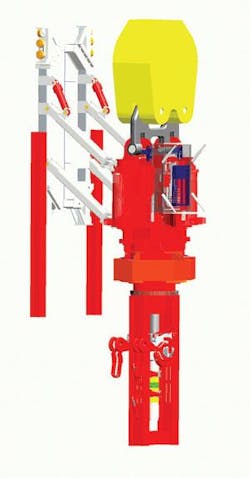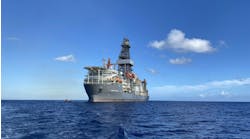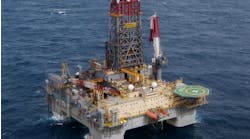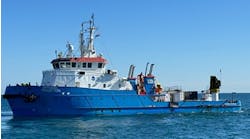Modular derrick drilling machine
Offshore drilling contractor Transocean and Aker Kvaerner MH AS (AKMH) have designed what they describe as a radically different derrick drilling machine that provides enhanced safety, efficiency, and drilling uptime. Transocean has contracted AKMH to provide a 1,250-ton Modular Derrick Drilling Machine (MDDM) intended originally for Transocean’s high-specification drilling rigs.
The MDDM is designed to enhance a new standard in drilling efficiency and reliability. The equipment will be based on modularization, novel design principles and designed to meet the deepwater drilling requirements foreseen for decades, such as drilling offshore wells of up to 50,000 ft in total depth.
According to Aker Kvaerner MH, “We will work closely together with Transocean to develop this new technology, which is considered a key element in both companies’ strategies to maximise safety, drilling efficiency and operational uptime.”
“This award is yet another acknowledgement of our capabilities and technology and represents a significant breakthrough in the deepwater offshore drilling market. Transocean is the world’s largest and one of the most demanding and quality conscious drilling contractors. This contract represents an important basis for further development of Aker Kvaerner MH in general, and our US based operations in particular,” says Roald Amundsen, President of Aker Kvaerner MH.
Moving to ultra-deep
As the drilling industry moves further into the ultra-deepwater arena and rigs drill deeper and more challenging wells, higher failure rates are occurring for top-drives, as some operator programs today require extensive operating time at the design limits of the equipment. The deepest offshore wells constructed to date have been about 35,000 ft in total depth. However, future wells are expected to reach as deep as 50,000 ft.
“The new top-drive design is radically different than the top-drive systems that we have in place today on our rigs,” said Mike Hall, Vice President, Engineering and Technical Services, for Transocean. “With improvements such as redundancy of operation-critical components, capacity for increases in drilling load requirements and modularization to make quick repairs, this unit is expected to take one of the most important pieces of drilling equipment to the next level of performance for Transocean. We are creating spare capacity to be able to drill the wells that we need today and those that will be planned 10 to 20 years from today. If history holds true, these requirements will be more demanding than what the equipment of today can deliver and we will be prepared to meet those needs.”
Improving performance
Approximately one year ago, Transocean launched an initiative to improve the operational uptime and performance from top-drive and pipe-handling equipment in its fleet. The company’s TDS/PHS performance team very quickly realized that in order to go to the next level in drilling performance, new equipment, particularly a new top-drive, would be required.
The company developed a top-drive specification, which was responded to by potential vendors who submitted innovative designs to meet Transocean’s targeted 0.1% annual downtime and modularization for component change-out times. The AKMH MDDM was ordered because it provided a simple, reliable, and redundant design.
This allows all major top-drive components or modules to be removed and replaced quickly. Today, it can take days to replace certain components on a top-drive when they fail, but this top-drive will be designed to conduct the same change-outs in a matter of hours: for instance, an estimated four-hour motor replacement and six-hour replacement of the main shaft and bearing unit.
Other key features included the significantly greater hoisting capacity at 1,250 tons as well as greater main bearing rotational load capacity that will enable 10 years of service before a top-drive overhaul is required. This top drive will have 110% more horsepower than the 750-ton top drives developed for the 5th-Generation fleet of offshore drilling rigs, and it will be designed to outperform current lifetime expectancy for top drives by 50% to 100%.
Meeting growing need
Once tested and proven the MDDM will enable high-specification offshore drilling rigs to meet growing needs to drill more demanding and complex wells while improving safety.
To reduce exposure to certain safety incidents, new work platforms will eliminate man-riding operations. Instead of working on the units from a riding belt, this top-drive will enable maintenance operations from the work platforms with easy access to components with designated lifting points for quick and safe handling of the large modules. In addition, certain maintenance, such as lubrication, will be done off-line with an automated system.
The first MDDM prototype is expected to be installed in a Transocean fifth-generation offshore drilling rig as early as 1Q 2007 following best-practice project execution principles gained through several demanding research-and-development projects by AKMH. As it is proven successful, this top-drive is expected to be implemented on other Transocean units.
“We are very pleased to develop this key drilling equipment, which is so important for overall drilling efficiency, as a joint effort with Transocean. The intentions and targets of this project perfectly match Transocean’s and AKMH’s strategies and ambitions to maximize drilling safety, efficiency and operational uptime,” states Roald Amundsen, AKMH president.•




